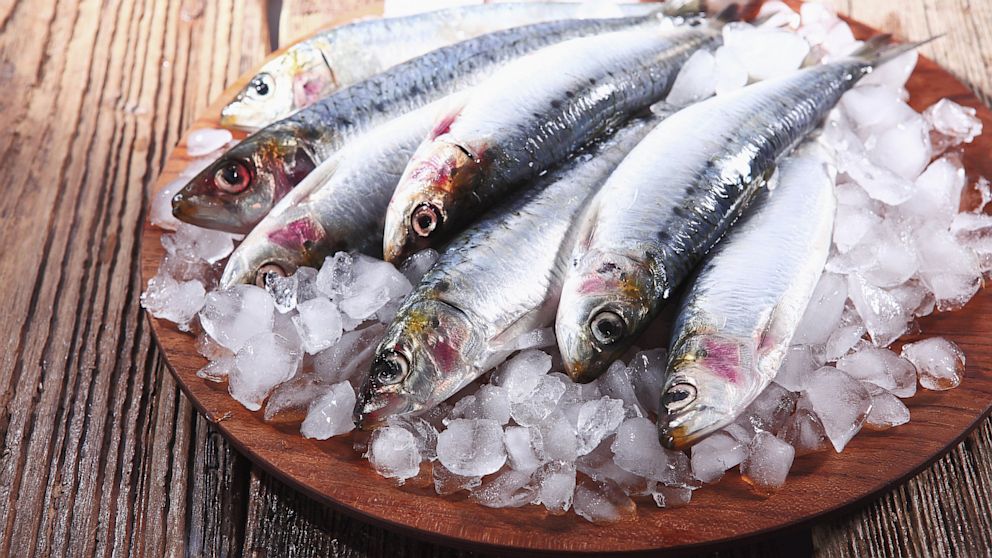The Seafood You Should and Shouldn't Eat
Simple rules to help clear up seafood confusion.

July 5, 2013— -- intro: To save the oceans—and our health—we need to eat more fish. The right fish. That's the mantra behind the new book The Perfect Protein, written by Andy Sharpless, the fearless leader of Oceana, the largest international organization focused solely on ocean conservation. Intrigued? So were we.
We tracked down Sharpless to learn more about his innovative concept for preserving ocean life, beating the obesity epidemic on land, and feeding the world by shifting diets to the best fish.
"The world's industrial-scale commercial fishing fleets have basically overfished the oceans," he says. "That comes down to fishing above scientifically recommended catch limits, destroying nursery habitats for young fish, and catching non-target species and discarding them at sea—bycatch."
If we want to have healthy fish left to eat, we need to know which ones to indulge in, which ones to enjoy occasionally, and which ones to avoid. Sharpless shares his recommendations…
Sign Up For the Daily Fix, your daily dose of news for healthy, green living!
quicklist: 1category: Seafood You Should and Shouldn't Eattitle: Sardines and Anchovies: Yesurl:text: Simple Rule: Stay small—eat the little fish.
Smaller species reproduce really quickly, and in most cases are an abundant, strong, and fertile part of the food chain, Sharpless says. In fact, little fish could feed millions of people sustainably and healthily if well managed.
"The lower down on the food chain, the smaller your footprint on nature," he adds. "If you can develop an appetite and taste for them, you'll have a lot to choose from, they're cheaper, and they're better for nature."
Read More: How to Cook with Sardines
quicklist: 2category: Seafood You Should and Shouldn't Eattitle: Mackerel: Yesurl:text: Simple Rule: Eat wild, not organic.
Wild Atlantic mackerel is rich in omega-3s that help your brain fire at full. Atlantic mackerel is low in contaminants, too, making it a strong seafood pick for you and the planet.
Bonus tip? Beware of "organic" seafood. Although there are some organic fish farms outside of the country, they aren't certified by U.S. authorities. Instead of organic, look for healthy wild picks listed in reliable seafood guides.
Read More: 21 Ways to Feed Your Brain
quicklist: 3category: Seafood You Should and Shouldn't Eattitle: Oysters, Mussels and Clams: Yesurl:text: Simple Rule: Enjoy lots of shellfish.
Generally speaking, Sharpless says most shellfish are a good choice. Oysters, mussels, and clams—farmed or wild—help improve water quality and, because of their shorter lifespans, tend to accumulate fewer contaminants, he says. Scallops are a little trickier; you'll want to look for diver- or day-boat-caught scallops, ones caught with minimal impact on the environment.
MasterChef Winner's Homemade Clam Chowder Recipe
quicklist: 4category: Seafood You Should and Shouldn't Eattitle: Wild-Caught Alaskan Salmon: Sometimesurl:text: Simple Rule: Eat big fish mindfully and rarely.
Just like birthday cake should be an occasional treat, so should healthy big-fish picks like Alaskan wild-caught salmon. Larger fish take years to reproduce, and chronic overfishing has left many big-fish species in major peril. Orange roughy, for instance, can live to be 100 years old and only start reproducing at age 40. Overharvesting young roughy has left the species in limbo.
Also noteworthy? Big fish, the head honchos of the food chain, often contain higher levels of contaminants like mercury because they accumulate up the food chain. (Wild-caught Alaskan salmon is an exception, and a healthy choice.)
The 10 Healthiest Fish on the Planet
quicklist: 5category: Seafood You Should and Shouldn't Eattitle: Shrimp: Nourl:text: Simple Rule: Bycatch means shrimp must be bygones.
"If you want to be a responsible seafood eater, you have to say good-bye to shrimp," Sharpless says, noting that shrimp fleets tend to catch a lot of other things in their nets, too. American data show shrimp catches contain 5 pounds of non-shrimp species per pound of shrimp. "Much is dumped out on the deck, damaged, injured, killed, or discarded at sea," Sharpless says.
When you eat shrimp, you're responsible in part for 5 pounds of bycatch, including sea turtles and pretty much any other type of fish in the Gulf. Farmed shrimp isn't any better. It's been found to harbor banned antibiotics—even ones that could cause cancer—pesticides, and bits of insects.
6 Disgusting Facts about Shrimp
quicklist: 6category: Seafood You Should and Shouldn't Eattitle: Farmed Salmon: Nourl:text: Simple Rule: Eat wild seafood.
One-third of all fish caught in the world are turned into fish meal or oil; of that, 81 percent goes to farmed fish like salmon. It takes 5 pounds of wild fish to produce 1 pound of farmed salmon, not a favorable footprint on nature. Plus, farmed salmon tends to be full of parasitic sea lice, requiring the treatment of high-dose toxic chemicals.
quicklist: 6category: Seafood You Should and Shouldn't Eattitle: Chilean Sea Bass & Bluefin Tuna: Nourl:text: Simple Rule: Don't eat imperiled fish.
Overfishing has brought Chilean sea bass and Bluefin tuna to the brink of collapse. And put quite simply, there just aren't that many big fish left in the ocean.
The good news is if we avoid these species now and embrace science-backed numbers when figuring out how much to take from the ocean, we could one day enjoy these species again. "The purpose of good ocean management is to make sure there's enough in the bank account to make sure after the catch there's enough left in water for next year," Sharpless says.




